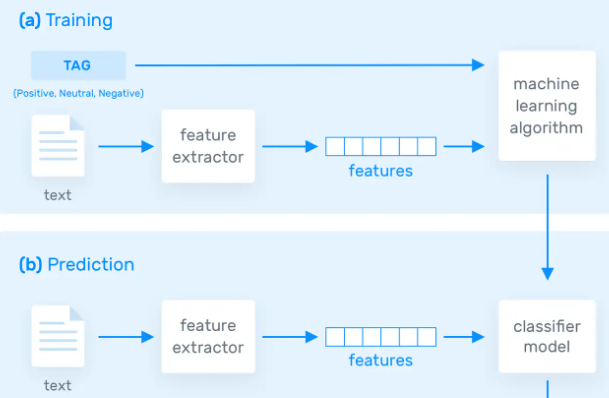Have you ever read a positive or negative comment about your brand and wondered why customers felt the way they did?
By capturing subjective information, you can gain insight into how customers feel about you and use that information to improve their experience.
This process is called customer sentiment analysis.
Let’s look at customer sentiment analysis and how brands use it to improve customer experience.
What is customer sentiment analysis?
Customer sentiment analysis is an automated process. It analyzes conversational English in online communications to see how customers feel about a brand, service, or product.
By analyzing customer social media posts, online tickets, chatbot conversations, and feedback forms, brands can see how a customer feels and what issues they’re facing.
Customer sentiment analysis is a great example of business process automation, as it works by reading and categorizing customer data in tickets so it can be routed to the appropriate channels.
By using something called Natural Language Processing (NLP) and a series of algorithms, sentiment analysis detects patterns in text and automatically classifies opinions as neutral, negative, or positive.
Customer sentiment analysis is essential for services that rely on an emotional factor, like buying a gift for a godchild.
In short, customer sentiment analysis automates reading and tagging data so you can route customer tickets to the right people as swiftly as possible.
How does customer sentiment analysis work?
Customer sentiment analysis — also known as opinion mining — uses NLP to determine the emotional tone behind online conversations automatically.
Depending on how accurate your model is and how much data you need to analyze, you can implement different model algorithms.
Customer sentiment analysis algorithms usually fall into one of these buckets:
- Hybrid: A combination of automatic and rule-based approaches
- Rule-based: Systems that automatically perform the analysis based on a set of manually crafted rules
- Automatic: Machine learning techniques used to learn from data
How does customer sentiment analysis improve the customer experience?
Customer sentiment analysis improves the customer experience in the following ways.
1. Improving the buying experience
From presenting the first offer to supporting them throughout checkout, customer sentiment analysis improves the buyer’s journey.
Brands use customer sentiment analysis to understand how customers feel about:
- Payment options
- Discounts and deals
- Products and services
- Marketing campaigns
- Specific offers
- Wait times
- Purchasing and shipping information
By uncovering customer attitudes, tone, and temperament, brands can understand how customers feel about buying. Similar to how physicians can pick up on acoustic characteristics of a patient on the phone, brands can also use these insights to uncover the unspoken meaning behind words.
For instance, take a look at this example from Inkable Label:
At the bottom of each product page, Inkable Label has included the above calls-to-action (CTAs) to help potential customers during the buying process.
The CTAs they’ve chosen include:
- I’m ready to order!
- I know what I want, but I don’t see it here
- I’m really confused and need to talk to someone
By conducting customer sentiment analysis, Inkable Label has determined its customers’ top three buying emotions at the start of checkout.
- Feeling eager and excited to buy
- Feeling ready to buy but unsure how to do it
- Feeling confused and needing support
With their customers’ pain points and feelings in mind, Inkable Label has come up with better ways to support customers during the buying journey.
When customers head to their page to shop, they’re more likely to stick around knowing that purchasing support is available to them in a way that matters most.
2. Inspiring value-driven content and personalized experiences
Understanding how your customers feel and what they want is the only way to deliver value-driven content and personalized experiences.
With customer sentiment analysis, you can uncover customer emotions related to:
- Frequently asked questions (FAQs)
- User-generated content
- Positive and negative reviews
- Relatable brand experiences
With this information in hand, you can personalize offers, create relatable marketing campaigns, and produce value-driven content in line with your customers’ emotions.
For instance, delivery software Track-POD added valuable and personalized answers to commonly asked customer questions. By understanding who its customers are and what pain points they have, Track-POD has been able to remove information silos that poorly affect customer experience.(Image Source)
3. Enhancing products and services
Customer sentiment analysis helps brands understand what product or service problems customers keep running into.
By performing customer sentiment analysis on surveys, reviews, and social media posts, brands can understand:
- What bugs or issues need to be fixed on a product or service immediately
- What customers are saying about a brand’s products and services
- How often a customer recommends a brand’s products and services
- How a brand can improve specific product features and services
- What snags customers keep running into
- What issues send customers to a competitor
- What features or services customers crave that a brand hasn’t offered yet
4. Improving customer service
It only takes one or two poor experiences to lose a customer to a competitor. 41% of Millennials indicate that reviews are a major factor for their purchasing decisions, therefore avoiding negative customer experiences will also help avoid negative reviews.
By running customer sentiment analysis on customer service interactions and survey responses, brands learn:
- What pleases customers and what frustrates them
- What severe pain points customers have
- How customers prefer to be supported
- What customers are saying about their customer service experience
- Which customer service channels are missing or could improve
- How customers feel about customer support agents
- How effective customer resolution processes are
- How customers feel about the overall time it takes to solve a request
For instance, you may learn that negative comments often relate to poor resolution processes, encouraging you to streamline and improve the resolution process.
Or you may learn that most negative comments relate to long response times. This would prompt you to use chatbots to speed up response times.
5. Monitoring brand reputation and optimizing marketing strategies
Customer sentiment analysis helps brands monitor brand mentions in real-time and send negative comments to the top of the queue.
Whether it’s noticing an outraged client on Twitter or spotting a group of customers complaining about your brand on Yelp, customer sentiment analysis is key to monitoring brand reputation.
With customer sentiment analysis, brands can watch negative comments in real-time and respond quickly to minimize brand impact.
Customer sentiment analysis also helps brands boost their marketing strategies.
From monitoring industry trends to keeping a close eye on competitor product launches, customer sentiment analysis helps brands identify weaknesses before releasing new offers.
Let’s take a look at some ways brands use customer sentiment analysis to optimize their marketing strategies.
Brands use customer sentiment analysis to study:
- Sentiments toward new products, features, and services on social media
- Competitor weaknesses and strengths
- New competitor launches, re-brands, and market changes
- Winning marketing tactics
- Segmented customer audience behavior
- Metrics like Customer Churn Rate (CCR) and Net Promoter Score (NPS)
With these insights in mind, brands can manage and solve negative comments, reach out to unhappy customers, and tailor their marketing campaigns accordingly.
Ready to try customer sentiment analysis?
By capturing subjective information, you can gain insight into how customers feel about you and use that information to improve their experience as nothing else can.
Use customer sentiment analysis to:
- Improve the buying experience
- Inspire value-driven content
- Deliver personalized experiences
- Enhance products and services
- Improve customer service
- Monitor brand reputation
- Optimize marketing strategies
Ready to try customer sentiment analysis? Share your experience in the comments!











